by BA Nester
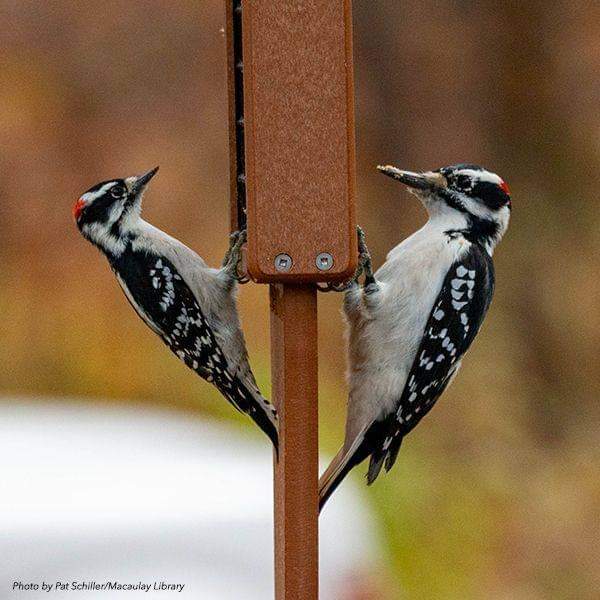
Can you tell them apart at a glance? Can you remember which one is the smaller one? I always remember that ‘down’ is the finest of feathers, so the DOWNY is the smaller woodpecker. In fact, it is the smallest woodpecker in North America. These active little guys are a common sight at our backyard feeders and in parks and woodlots. At my feeders, they hang out with flocks of chickadees and nuthatches, and they are barely bigger than the others. They are acrobatic foragers on tiny branches or slender plant galls and suet feeders. They are such fun to watch!
In winter Downy Woodpeckers are frequent members of mixed species flocks. Advantages of flocking include having to spend less time watching out for predators and better luck finding food from having other birds around.
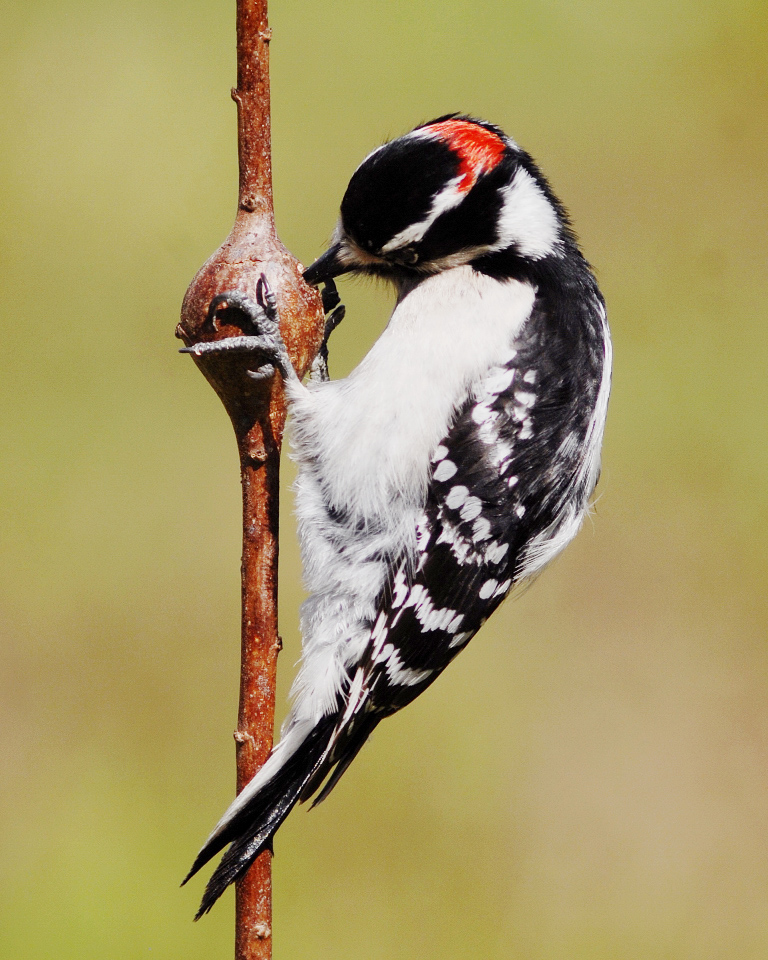
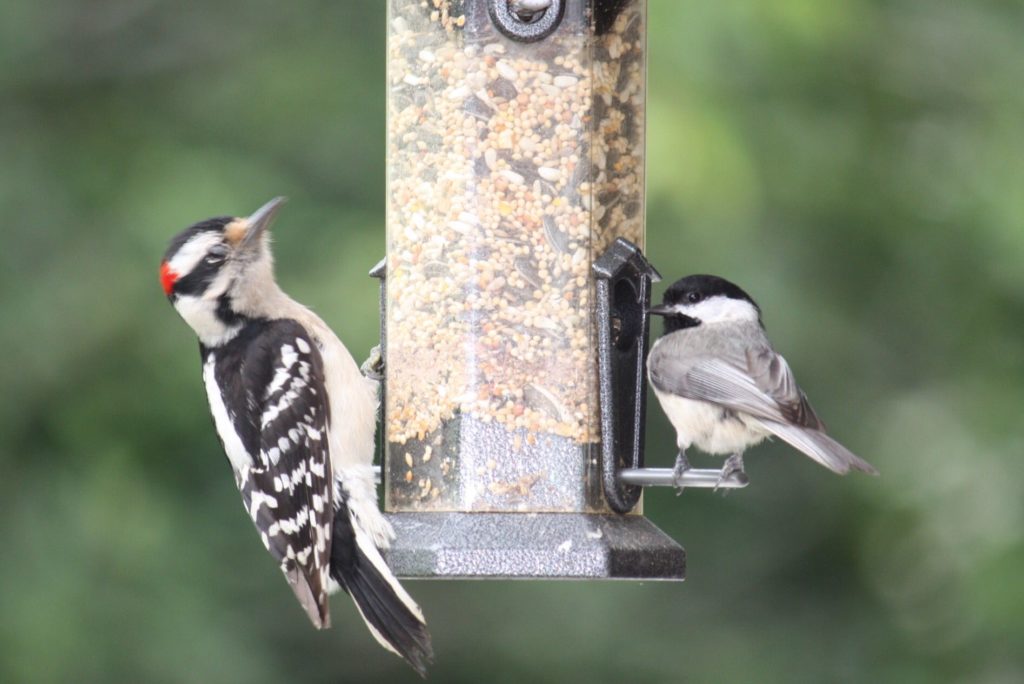

DOWNY WOODPECKERS
So, let’s talk about what Downies look like! All About Birds describes the Downy this way: “Downy Woodpeckers are small versions of the classic woodpecker body plan. They have a straight, chisel-like bill, blocky head, wide shoulders, and straight-backed posture as they lean away from tree limbs and onto their tail feathers. The bill tends to look smaller for the bird’s size than in other woodpeckers. Downy and Hairy Woodpeckers give a checkered black-and-white impression. The black upperparts are checked with white on the wings, the head is boldly striped, and the back has a broad white stripe down the center. Males have a small red patch on the back of the head. The outer tail feathers are typically white with a few black spots. Downy Woodpeckers hitch around tree limbs and trunks or drop into tall weeds to feed on galls, moving more acrobatically than larger woodpeckers. Their rising-and-falling flight style is distinctive of many woodpeckers. In spring and summer, Downy Woodpeckers make lots of noise, both with their shrill whinnying call and by drumming on trees.”

HAIRY WOODPECKERS
When it talks about the Hairy Woodpecker in the Celebrate Urban Birds section it says: “The larger of two look alikes, the Hairy Woodpecker is a small but powerful bird that forages along trunks and main branches of large trees. It wields a much longer bill than the Downy Woodpecker’s almost thornlike bill. Hairy Woodpeckers have a somewhat soldierly look, with their erect, straight-backed posture on tree trunks and their cleanly striped heads. Look for them at backyard suet or sunflower feeders, and listen for them whinnying from woodlots, parks, and forests.” They, too, have the bold black and white pattern that the Downies have, the males with the red patch on the nape of their heads.
Remember, the Hairy’s beak is as long as his head!
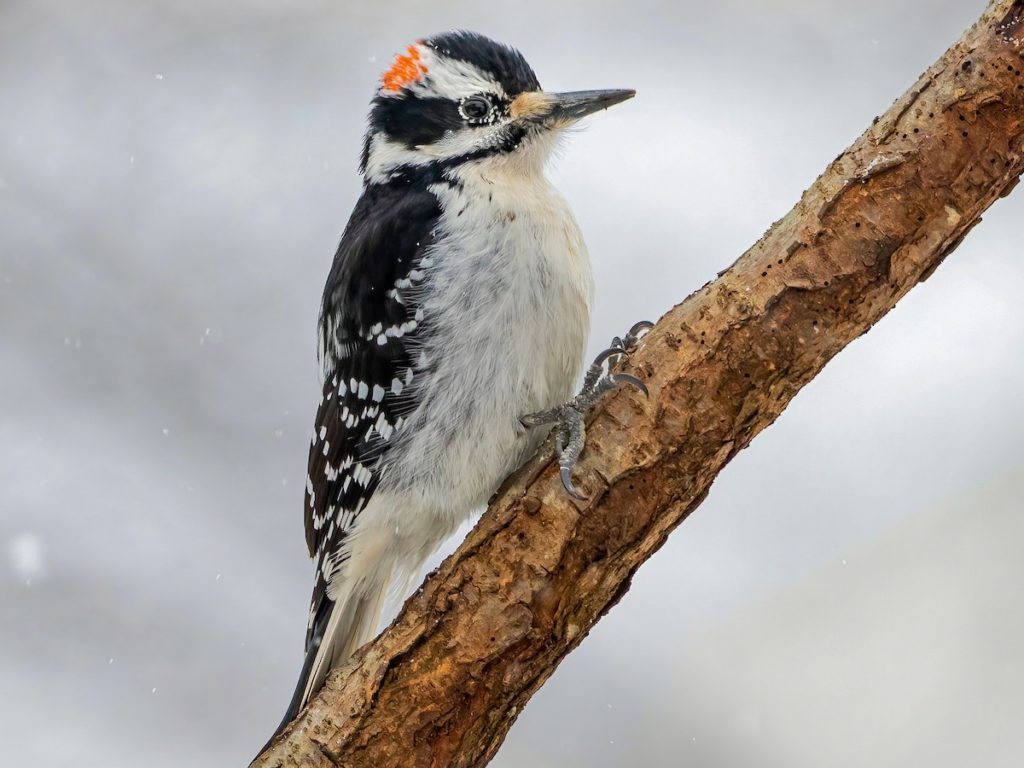
THE TWINS
So now we know they look alike, except for size. They both inhabit open woodlands, orchards, city parks and our backyards with deciduous trees. Downies nest in trees, tall weeds or in fencerows. Both woodpeckers look for trees that have a fungus or rot problem, making it easier for them to peck out their nest holes. They both prefer an angled branch with the entrance on the lower side to keep flying squirrels and sapsuckers from using their nests. The Downies nests are slightly smaller than the Hairies. Both species use the woodchips that come from pecking to line their nests to cushion the eggs. Both species only lay eggs once a year with 3-6 eggs for the Downies and 3-8 for the Hairies. Baby Downy Woodpeckers are fed in the nest cavity for about 18-21 days before they’re sent out on their own … well except for all the begging from the parents! The larger Hairy Woodpecker babes get 28-30 days to grow their feathers and prepare for life in the forest!
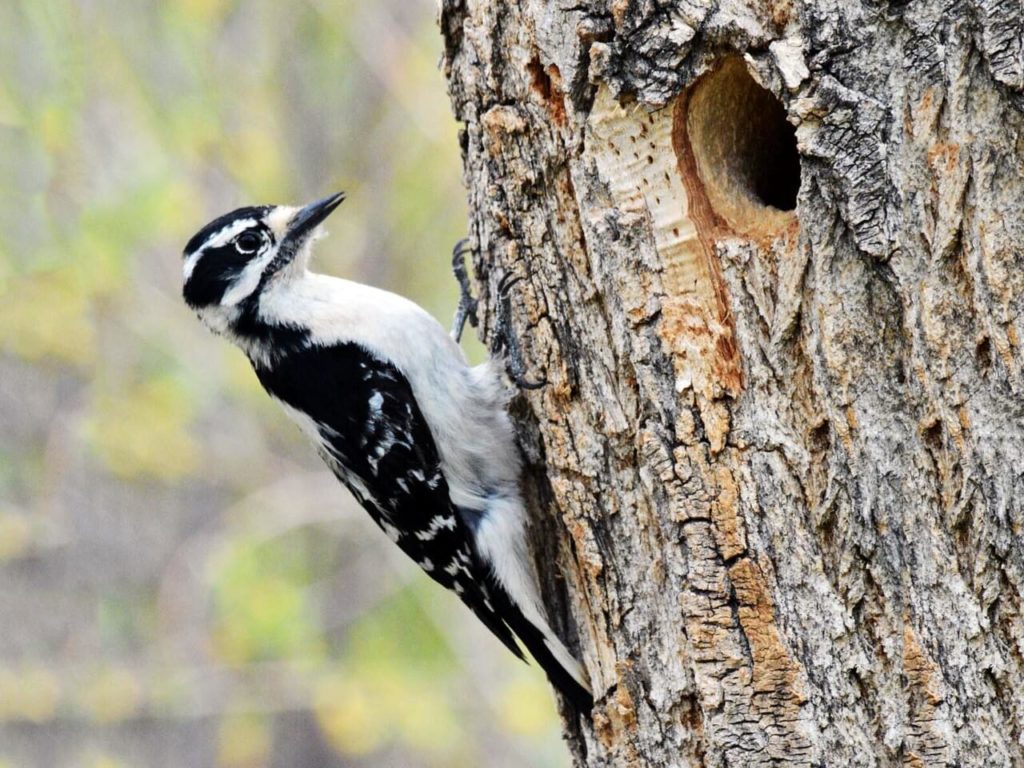
FOOD
Of the two, the Downies are most likely to visit your bird feeding stations! They LOVE suet! But, they will also dine on your black oil sunflower seeds, the millet that the buntings like, peanuts hanging in a peanut wreath and good ol’ chunky peanut butter. Sometimes they’ll even drink from your hummingbird or oriole feeders! They must have a sweet tooth! Their natural diet consists of mainly insects, including beetle larvae that live inside wood or tree bark as well as ants and caterpillars. They eat pest insects including corn earworm, tent caterpillars, bark beetles, and apple borers. These are good guys!!!
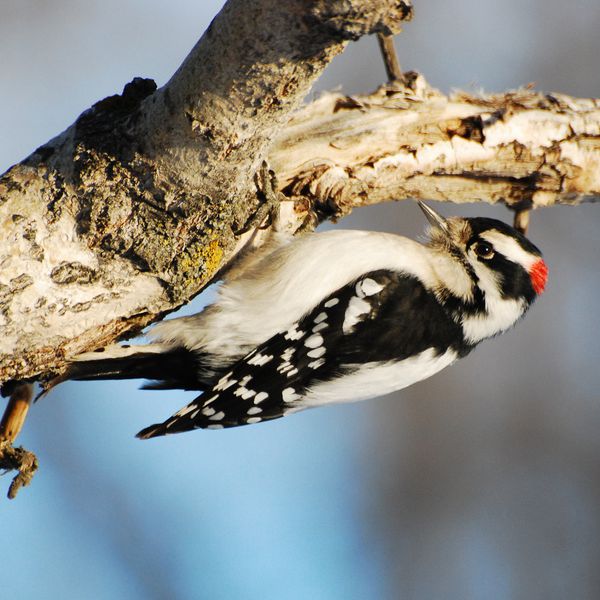

The Hairy Woodpeckers are most apt to visit your feeders when natural food is more scarce. They like the same things the Downies do, preferring suet first! Then they will dine at the sunflower seed feeders or eat the peanuts and peanut better you’ve spread around for them! The Hairies preferred natural diet is INSECTS! As a matter of fact, it makes up 75% of their diet, with fruit and seeds making up 30%. They prefer larval wood-boring and bark beetles, ants, and moth pupae in their cocoons and have been credited with saving orchards and forests from destructive insect infestations! Cool!
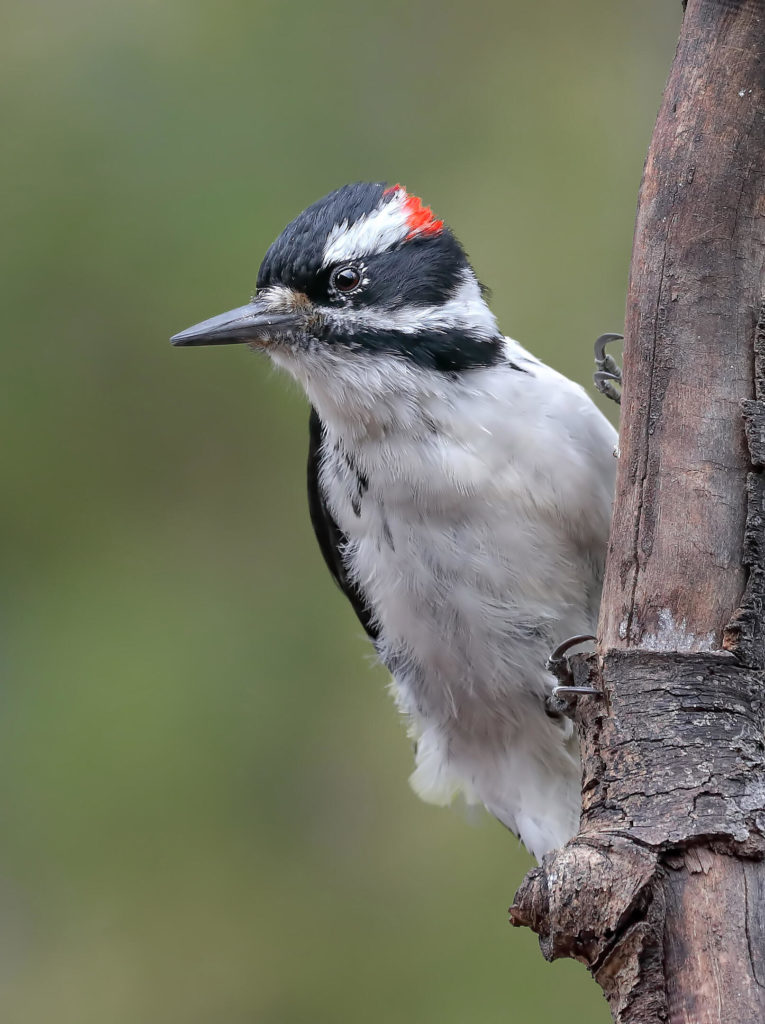
Hairy Woodpeckers sometimes drink sap leaking from wells in the bark made by sapsuckers. They’ve also been seen pecking into sugar cane to drink the sugary juice

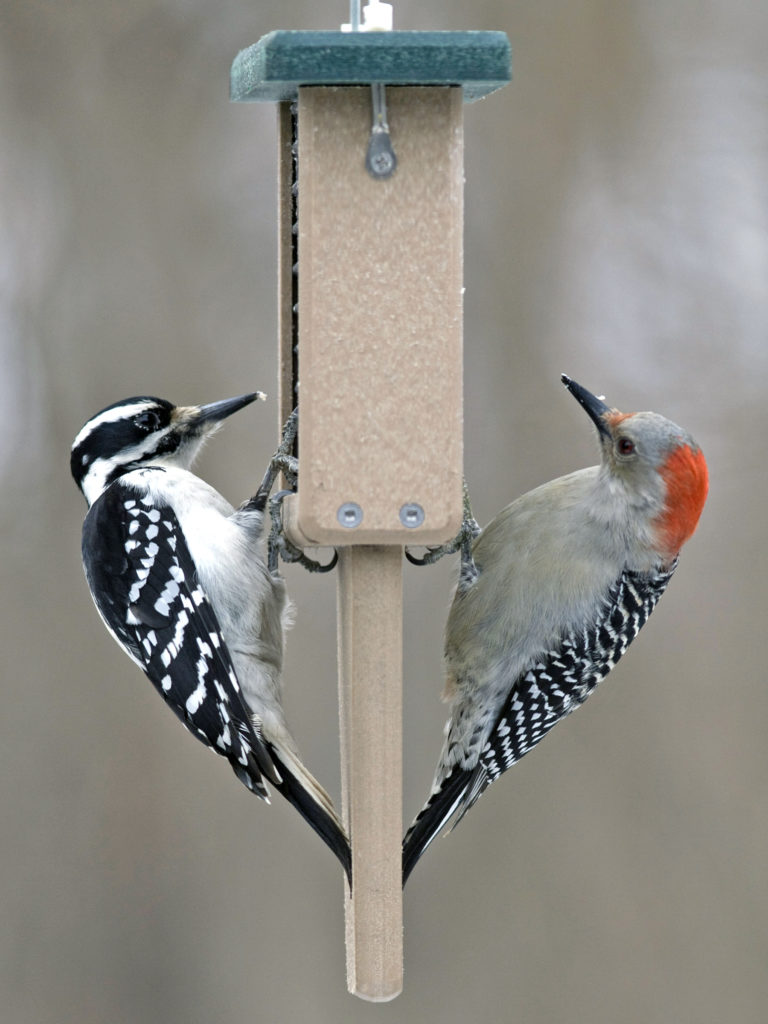
CONSERVATION
Both Downy and Hairy Woodpeckers have stable populations at this time. According to the North America’s Bird Watch List, the little Downies “sometimes nest along fences, and the shift from wooden to metal fenceposts over the last century may have reduced their numbers. But clearing and thinning forests has had the opposite effect, since Downy Woodpeckers do well in young forests.”
Hairy Woodpeckers are both common and widespread throughout North America. While their population has increased the past decades, there is concern about habitat loss in the future as the large forest areas are broken up and competition for nesting sites from non-native birds like the European Starling may cause declining numbers.
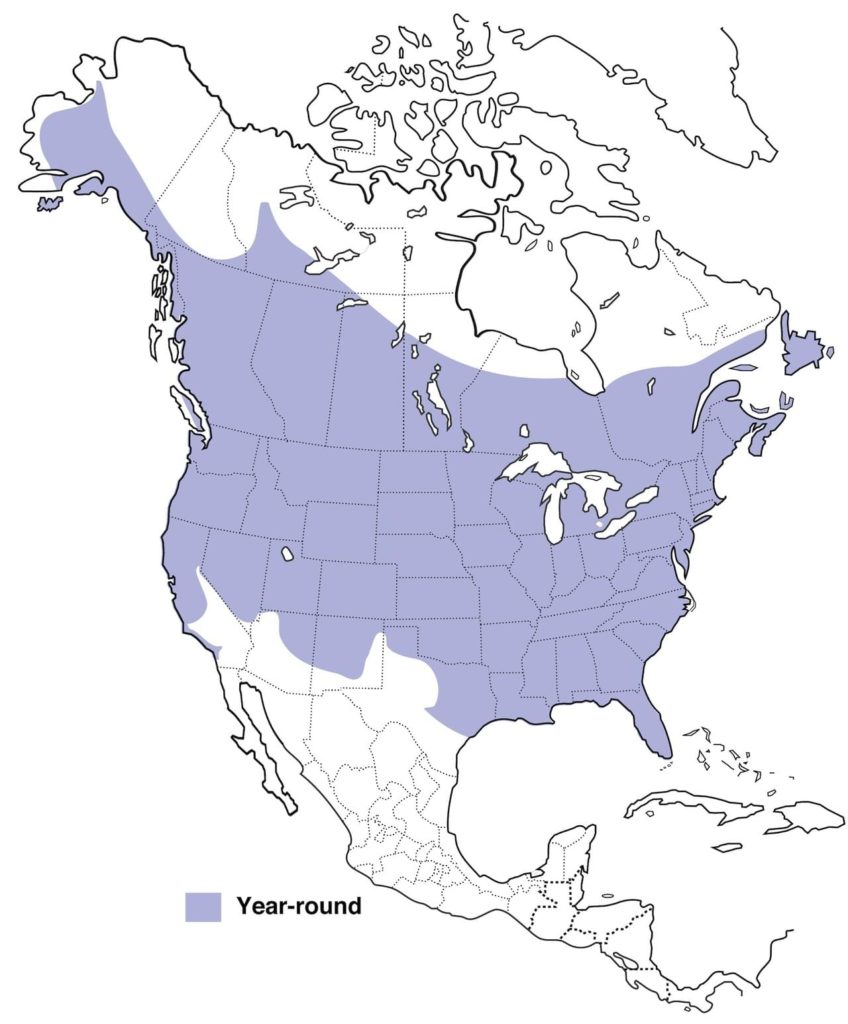

The best we can do as concerned Citizens is to assure the best conservation practices that supply the nesting sites and food sources these beautiful Woodpeckers need! Keep our feeders and water sources clean and full of fresh, healthy seeds and suet! Then, sit in your comfy chair, keep your binoculars at the ready and just enjoy watching the Downy and Hairy Woodpeckers in your own natural, private backyard theatre! Ahhhhhhh!

2 thoughts on “DOWNY v HAIRY Woodpeckers”
Fed birds all winter and still now. My woodpeckers i don’t see or visit the suet feeders. This is spring April/May where do they go? Miss them.
Hi Carol, It’s always the mystery of Mother Nature! In the Spring of the year there is more natural food available (insects), so our Feathered Friends don’t need us as much. I take down my suet in the Spring. Even my seed feeders are getting less activity as the birds are nest building, mating, etc. Have confidence when it gets colder and the insects are not so readily available they’ll be back at your suet! Because of all of the lush green leaves it’s even harder to see the birds than it is in the Winter. That makes Spring and Summer a good time to hone your listening skills and see how many birds you can I.D. by their songs in the early morning and evening! Happy Birding!